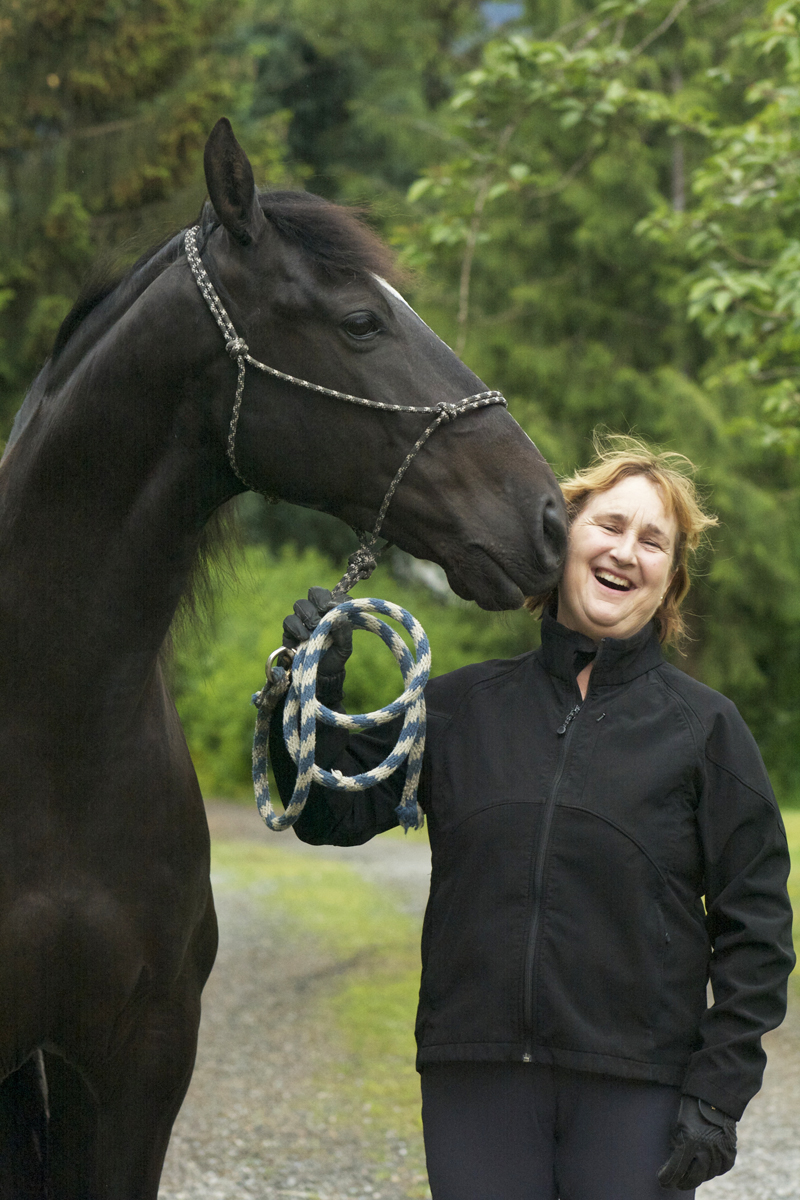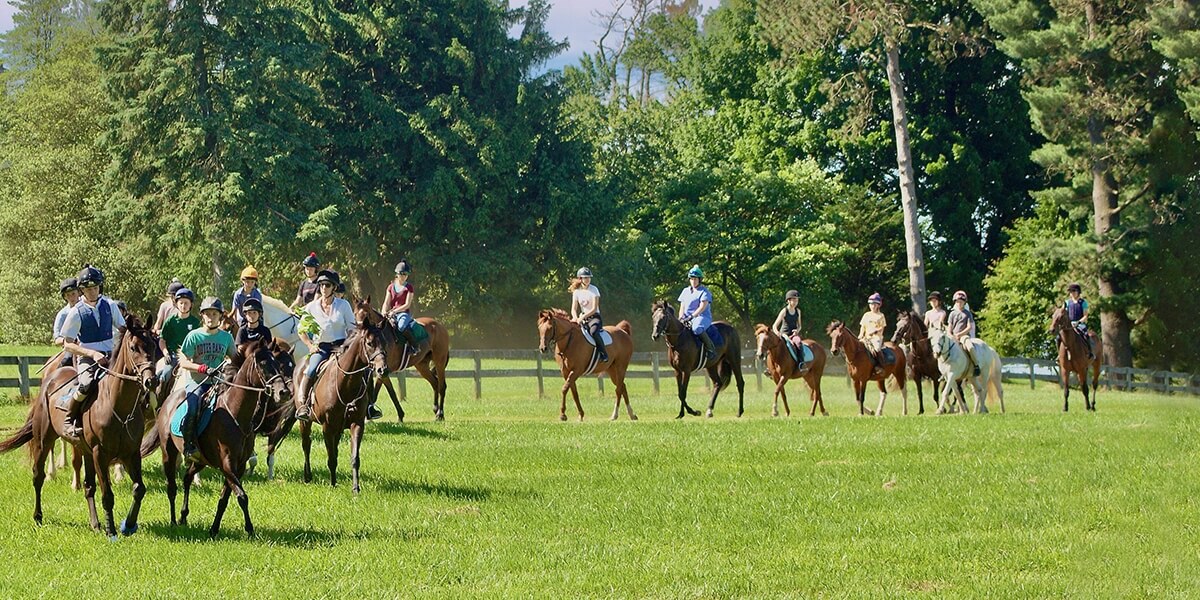8 Strategies to Keep Riding Fun
Last summer I began teaching a pair of young riders—a 12-year-old girl and her 14-year-old brother—who wanted to learn more about the discipline of working equitation. The first time they came for a lesson I asked them about their strengths, weaknesses, and what their goals were for riding, now and in the future. The girl told me the usual things about wanting to jump, show, and have better overall control of her horse. But the boy’s answer made me laugh when he said, “I don’t want to learn about riding, I just want to ride.” I love the honesty of children!
As the weeks went by, these two young riders improved immensely. They entered a few schooling shows and did well. They went camping with their horses, trail rode, and took part in a mounted orienteering event. Then school and winter arrived, and I didn’t see them again until recently when the girl showed up without her brother at a clinic I gave. When I asked about her brother, she said he wasn’t riding anymore because he was too busy with other sports and school, though he did plan on doing some trail rides.
I wasn’t surprised, but I was disappointed. This is all too common with many young riders in the horse world. This young man has natural talent with horses and riding, and hopefully he’ll come back to it someday. But I’m always saddened when we lose a young rider and ask myself what I could’ve done differently. How can I (and the horse community in general) keep kids interested in horses?
I’ve thought a lot about the answers to this question. I realize horses aren’t for everyone, but with the struggles many young people are experiencing in their lives horses can be incredibly beneficial. Here are eight strategies to keep youth interested and involved with horses.
1. Start with riding lessons.
Don’t buy a horse until you know if your child really wants to ride and how they want to ride. Let them learn to groom, saddle, and discover the sensations of riding a giant animal with its own mind. Horses are strong and smelly and not always easy to handle and ride. Children need to understand the realities of horses before a horse is purchased or leased. One of the best places to introduce children to horses is at a summer camp.
2. Find an appropriate mount.
It can’t be overstated—the horse must be fun for the rider (regardless of age or ability). Sometimes there’s no good reason a horse and human are incompatible, but if the person isn’t having fun the horse isn’t the right one. Don’t keep trying to make a bad pair work—find a new mount. This is where a good instructor can help as they can often see a trainwreck coming sooner.
Consider a lease or partial lease to ease a child into a partnership and learn what kind of horse is best for your child. Horses who are pushy, unresponsive, spooky, aggressive, etc., are completely unsuitable and can forever discourage a child who doesn’t have the skills or strength to deal with this behavior. A well-trained, responsive horse with a temperament that suits the child’s skills is essential.
Take the time to find the perfect horse. Be sure the child gets plenty of opportunity to try out the horse and handles it in the field and stable before bringing it home. Older, been-there-done-that horses are worth their weight in gold for youth. Do not make the mistake of buying a young prospect your child can “grow up with”.

3. Know your child.
Don’t force timid children to jump, do gaming or other high-octane types of riding. Don’t bore adrenaline junkies and highly distractable children with dressage lessons, Western pleasure, or mind-numbing theory. When they’re interested and ready, they’ll move on and expand. Give the studious children books to study or training videos to watch at their own pace. Many children enjoy playing games, obstacle work, jumping, cross-country, pony club activities, and gymkhana games, but don’t assume they all will. Some more serious, sensitive children prefer and crave dressage and arena work. Don’t force an insecure kid to try scary things before they’re ready.
4. Let them socialize.
Most children enjoy equine activities with other children more than solitary riding or spending time with boring adults. Socializing can be a make-or-break-it deal for some kids. 4-H and Pony Club are good ways to get children hanging out and playing with other young people with horses. Pony Club is structured on the idea that older, more experienced children help and mentor the younger riders.
In the U.S. boys sometimes look around and don’t see any men involved in the horse world, so they feel uncomfortable and leave. These young men might benefit from getting involved in aspects of horsemanship where male role models and other boys can be found such as roping, cattle penning, cutting, mounted archery, endurance, competitive trail riding, eventing, and jumping.
5. Get them out of the arena.
Going from point A to point B is good for everyone: horses, adults, kids. Spending a day out in beautiful country on a good trail horse is healing and beneficial. It gives children (and adults) a sense of freedom and independence. Include picnics and activities like mountaineering or competitive trail riding for added fun.
6. Get mentors and other heroes into their lives.
These can be trainers, clinicians, or older children/young adults. It should be a person the child can admire and emulate. Sometimes it’s someone they can observe from afar at a show or clinic, who’s top in the child’s dream discipline. The person should inspire the children to ride well and learn good horsemanship and treat horses well.
7. Let them see the best of the best of the sport.
When I was a little girl, my mother took me to the Cow Palace in San Francisco yearly to watch the Grand National horse show. It was there I fell in love with hunters and jumpers, but I also got to see driving, rodeo, reining and more. It was a highlight of my childhood.
Does your child love books about racing or movies like National Velvet? Take them to watch the Maryland Hunt Cup. Are they interested in eventing? Take them to watch a top three-day event like Land Rover Kentucky. Roping or barrel racing? How about the National Finals Rodeo? What does your child dream about doing with horses? Ask and explore it with them.

8. Make space for time to play, practice, and enjoy horses.
In our busy, fit-it-all-in world, horses can be healing to everyone who loves them; allow time to just have fun. Let children play on and with their horses. Let them play tag, Red Rover, or capture the flag on horseback. Let them ride bareback and be a little silly (but safety first). Let them sit in the field and read a book, do their homework, or dance with the ponies. Allow children time to enjoy these amazing animals without having to accomplish anything. Observing horses at rest and in the herd will make children better horsemen and create a bond between horse and child. This is what it’s all about—loving horses and being with them. It’s where most of us begin as kids and what we need to allow our children to experience. Don’t let ambition (your or theirs) rob them of the fun and magic of horses.
See this article in the July/August 2023 online edition:
July/August 2023 Issue

Kim Roe grew up riding on the family ranch and competed in Western rail classes, trail horse, reining, working cow, and hunter/jumper. She trained her first horse for money at 12 years old, starting a pony for a neighbor.
Kim has been a professional dressage instructor in Washington state for over 30 years, training hundreds of horses and students through the levels. In recent years Kim has become involved in Working Equitation and is a small ‘r’ Working Equitation judge with WE United.
Kim is the editor of the Northwest Horse Source Magazine, and also a writer, photographer, and poet. She owns and manages Blue Gate Farm in Deming, Washington where she continues to be passionate about helping horses and riders in many disciplines.

